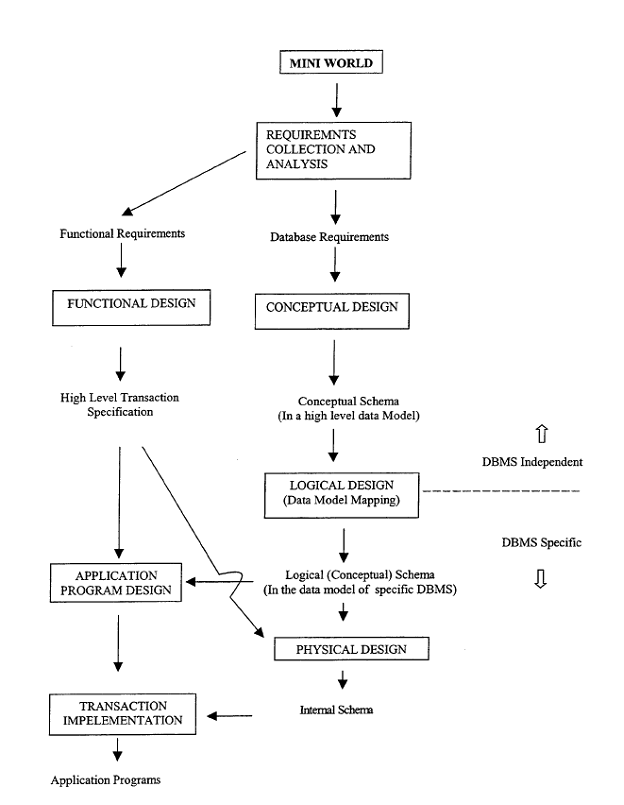High Level Conceptual Data Modeling for Database Design
For designing a victorious database application this conceptual modeling is playing a vital phase. This conceptual data modeling is playing higher level this will present the idea about the Entity-Relationship Model.
Conceptual Design Workflow
From the above figure we note that the first stride is requirements collection and analysis. At some stage to recognize and the requirements are certified by the users that’s why the database designers are interrogate. At last the outcome of this step is the set of customer requirements are printed in a few words. When we are identifying the data requirements in parallel it is necessary to identify the functional requirements which we are acknowledged. These user-defined operations include both retrievals and update.
The data flow diagrams, sequence diagrams are frequently used in the software design. And some of the functional requirements are identified. All of these requirements are examined together one time. And then by using a high-level conceptual data model then generate a conceptual schema in next step. The users’ database requirements are illustrated briefly in the conceptual schema the complete descriptions of the entity types, relationships and constraints are also contained. By using a commercial DBMS the database is implemented really in the next stage of the database design.
From a high level data model, the conceptual schema is changed into the implementation data model when the implementation of the data model is used by the current commercial DBMS in many ways. This is known as logical design or data model mapping. The physical design phase is the very last step. Individually the internal storage structures, access paths, and file organizations.


Very very satisfied by the answer thank you so much